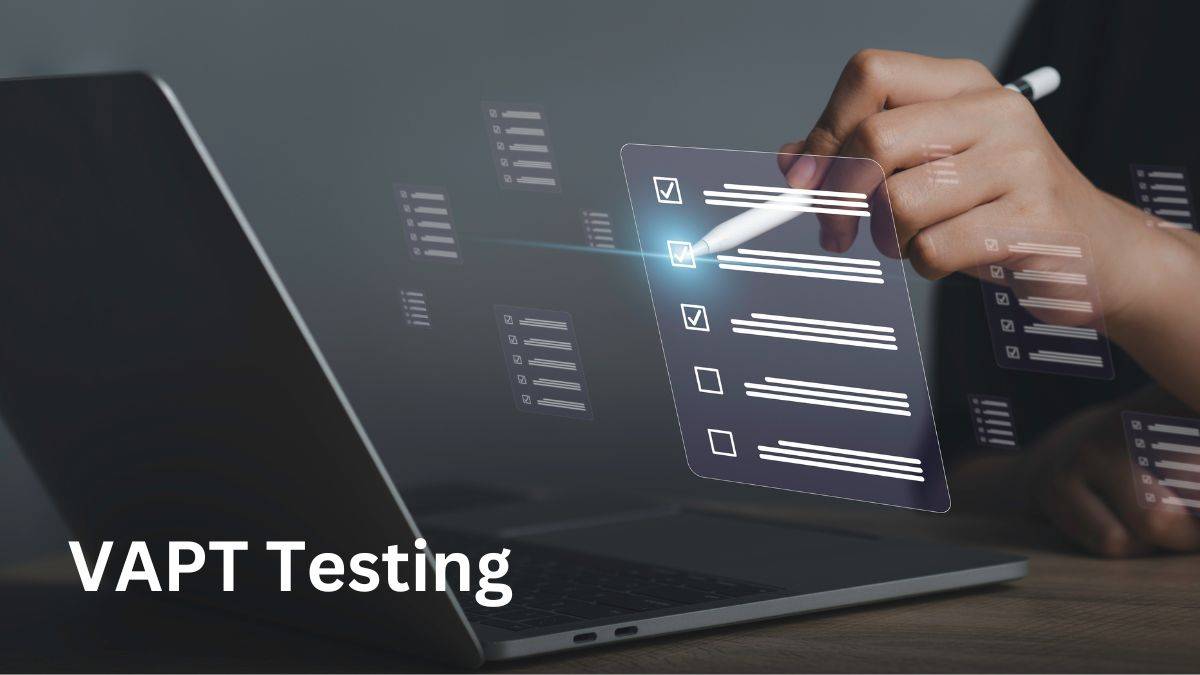In today’s digital age, cybersecurity threats are evolving at an unprecedented rate, making it crucial for organizations to implement robust cybersecurity measures. One such measure is Vulnerability Assessment and Penetration Testing (VAPT testing services), which plays a vital role in identifying and mitigating security vulnerabilities. In this blog post, we will explore the importance of regular VAPT testing in today’s cybersecurity landscape and its benefits for organizations.
Understanding VAPT Testing
Vulnerability Assessment and Penetration Testing (VAPT) is a crucial process for ensuring the security of your digital assets. It involves evaluating the security of your systems, networks, and applications to identify vulnerabilities that could be exploited by malicious actors. VAPT testing typically consists of two main components: vulnerability assessment and penetration testing.
The Benefits of Regular VAPT Testing
Regular Vulnerability Assessment and Penetration Testing (VAPT) is crucial for maintaining a strong cybersecurity posture. Here are some key benefits of conducting regular VAPT testing:
- Identifying Vulnerabilities: Regular VAPT testing helps identify vulnerabilities in your systems, networks, and applications.
- Preventing Data Breaches: By identifying and fixing vulnerabilities, VAPT testing helps prevent data breaches and protects sensitive information.
- Enhancing Security Posture: Posture by identifying and mitigating security weaknesses.
- Meeting Compliance Requirements: Many regulatory standards and industry frameworks require regular security testing Services, including VAPT testing. By conducting regular VAPT testing, you can ensure compliance with these requirements.
- Protecting Reputation: Data breaches and security incidents can damage your organization’s reputation. Regular VAPT testing helps protect your reputation by reducing the risk of security incidents.
- Cost Savings: Addressing vulnerabilities early through regular VAPT testing can save costs associated with data breaches and security incidents.
- Improving Incident Response: Regular VAPT testing helps improve your incident response capabilities by identifying and addressing vulnerabilities that could be exploited in an attack.
- Staying Ahead of Threats: Cyber threats are constantly evolving. Regular VAPT testing helps you stay ahead of these threats by identifying and mitigating new vulnerabilities.
Best Practices for Implementing VAPT Testing
Implementing Vulnerability Assessment and Penetration Testing (VAPT) requires careful planning and execution to ensure its effectiveness. Here are some best practices for implementing VAPT testing:
- Define Objectives and Scope: Clearly define the objectives of the VAPT testing and the scope of the assessment. Determine what systems, networks, and applications will be tested and the level of testing required.
- Select a Reputable Provider: Choose a reputable VAPT testing provider with experience in conducting thorough and effective assessments. Ensure that the provider has relevant certifications and expertise in your industry.
- Establish Clear Communication: Maintain clear communication with the VAPT testing provider throughout the assessment process. Ensure that they understand your organization’s goals, requirements, and constraints.
- Use a Combination of Automated and Manual Testing: Use automated tools to scan for known vulnerabilities.
- Ensure Confidentiality and Data Protection: This includes ensuring that the testing is conducted in a secure environment and that the results are handled appropriately.
- Document Findings and Remediation Steps: Document all findings from the VAPT testing, including identified vulnerabilities and recommended remediation steps. This documentation will be crucial for addressing and mitigating the identified vulnerabilities.
- Implement Remediation Measures: Implement the recommended remediation measures to address the identified vulnerabilities. Prioritize the remediation based on the severity of the vulnerabilities and the potential impact on your organization.
Impact on Compliance and Regulations
Vulnerability Assessment and Penetration Testing (VAPT) play a crucial role in helping organizations comply with various industry regulations and standards related to cybersecurity. Here’s how VAPT testing impacts compliance and regulations:
- Meeting Regulatory Requirements: By conducting VAPT testing, organizations can demonstrate compliance with these regulations and standards.
- Identifying Compliance Gaps: VAPT testing helps organizations identify gaps in their compliance with regulatory requirements. By identifying vulnerabilities and security weaknesses, organizations can take corrective action to address these gaps and improve their compliance posture.
- Protecting Sensitive Information: VAPT testing helps identify vulnerabilities that could lead to the exposure of sensitive information, allowing organizations to take steps to protect it.
- Avoiding Penalties and Fines: Non-compliance with regulations can lead to penalties, fines, and other legal consequences. By conducting VAPT testing and addressing identified vulnerabilities, organizations can avoid these penalties and maintain compliance with regulations.
- Enhancing Data Security: VAPT testing helps enhance data security by identifying and mitigating vulnerabilities that could be exploited by attackers. By improving data security, organizations can better protect their sensitive information and comply with regulations.
Cost-Effectiveness of VAPT Testing
Vulnerability Assessment and Penetration Testing (VAPT) can be a cost-effective investment for organizations. Here’s how VAPT testing can be cost-effective:
- Preventing Data Breaches: The cost of a data breach can be significant, including financial losses, reputational damage, and legal consequences.
- Reducing Security Incidents: By identifying and addressing vulnerabilities, VAPT testing helps reduce the likelihood of security incidents. This can lead to cost savings associated with incident response, remediation, and recovery efforts.
- Avoiding Regulatory Fines: Non-compliance with regulatory requirements can result in fines and penalties.
- Protecting Reputation: A data breach or security incident can damage an organization’s reputation, leading to loss of customers and business opportunities. VAPT testing helps protect reputation by reducing the risk of security incidents.
- Enhancing Security Posture: This can lead to long-term cost savings by reducing the likelihood of future security incidents.
Future Trends in VAPT Testing
Vulnerability Assessment and Penetration Testing (VAPT) are constantly evolving to keep pace with the changing cybersecurity landscape. Here are some future trends in VAPT testing:
- AI and Machine Learning: These technologies can help identify patterns and anomalies in data, leading to more efficient and effective testing.
- Automated VAPT Testing: Automation is playing a larger role in VAPT testing, with tools and frameworks becoming more sophisticated. Automated testing can help identify vulnerabilities quickly and accurately, reducing the time and effort required for testing.
- DevSecOps Integration: VAPT testing is being integrated into DevSecOps processes, allowing for continuous security testing throughout the development lifecycle. This integration helps identify and mitigate vulnerabilities early in the development process.
- Cloud Security Testing: As more organizations move to the cloud, there is a growing need for VAPT testing services specific to cloud environments. Cloud security testing focuses on identifying and mitigating vulnerabilities in cloud-based systems and services.
- IoT Security Testing: With the proliferation of Internet of Things (IoT) devices, there is a growing need for VAPT testing for IoT systems. IoT security testing focuses on identifying vulnerabilities in IoT devices and the networks they connect to.
- Zero Trust Security Model: The Zero Trust security model, which assumes that all networks are untrusted, is becoming more prevalent.
Conclusion:
Regular VAPT testing is essential for organizations looking to protect their systems and data from cyber threats. Organizations can enhance their cybersecurity posture and protect themselves against potential breaches.



